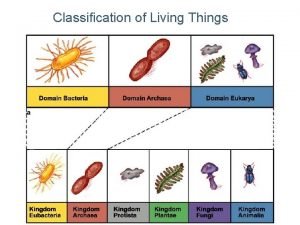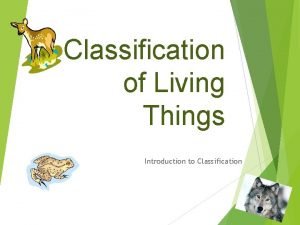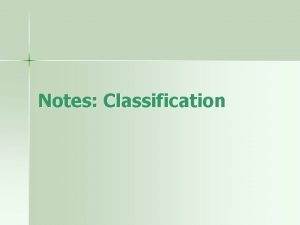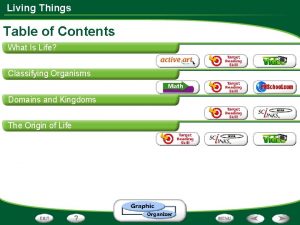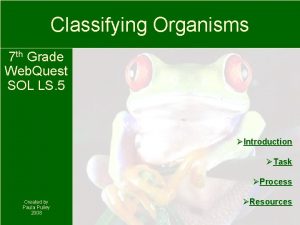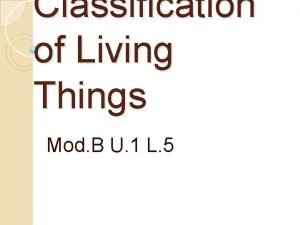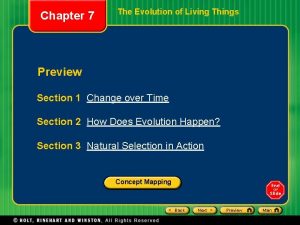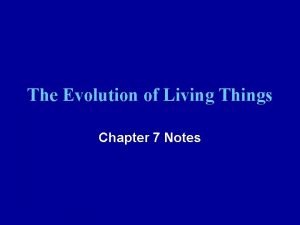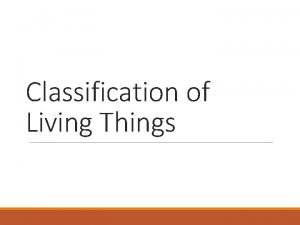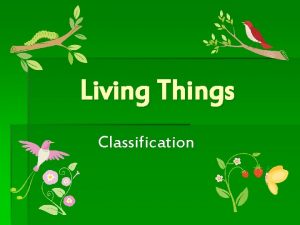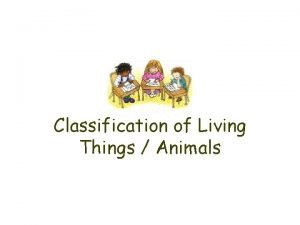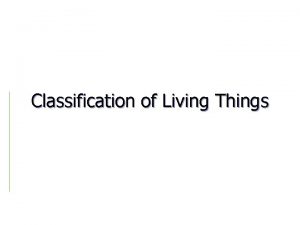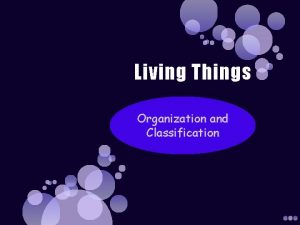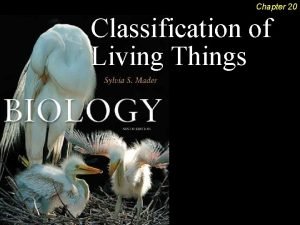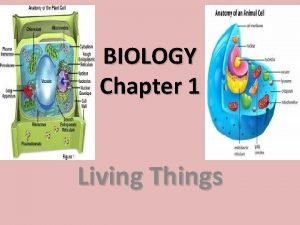Chapter 20 Classification of Living Things 20 3












- Slides: 12

Chapter 20 Classification of Living Things 20 -3

Classification of Living Things 2 Cladistic Systematics Now that we know how to read phylogenetic trees…. how are they made? Based on shared anatomical characteristics Cladogram: a branching diagram that shows the relationship among species in regard to their shared derived characteristics A cladogram is a special type of phylogenetic tree

Classification of Living Things 3 Cladistic Systematics Cladogram: Traces evolutionary history of the group under study Uses shared derived characters to: Classify organisms, and Arrange taxa into a cladogram A clade is an evolutionary branch that includes: w. A common ancestor, together with w All its descendent species

Constructing a Cladogram When constructing a cladogram, the first step is to make a chart with the characteristics to be compared. Notice in the chart on the right all of the organisms have a notochord, but not all of them are vertebrates. 4

Constructing a Cladogram Only the newt, snake and lizard have lungs and a 3 -chambered heart. Snakes and lizards have internalization fertilization and amniotic membranes in their eggs. Reptiles (snakes and lizards) are a clade Clade: an evolutionary branch that includes a common ancestor together with all its descendant species 5

Constructing a Cladogram The newt (an amphibian) and the eel (fish) are all evolutionary descendants of reptiles The next step is to draw a cladogram showing these relationships The goal is to have the simplest drawing possible What is the deal then with bony limbs and long cylindrical body? 6

Constructing a Cladogram parsimony: the fewest number of assumptions is the most logical. results in the simplest cladogram possible 7

Classification of Living Things 8 Parsimony Cladists are always guided by the principle of parsimony The arrangement requiring the fewest assumptions is preferred This would: Leave the fewest number of shared derived characters unexplained Minimize the number of assumed evolutionary changes The reliability of a cladogram is dependent on the knowledge and skill of the investigator

Alternate, Simplified Cladograms 9 a. X, Y and Z share the same characteristics. b. & c. b. and c. are unlikely examples as the shared characteristics in Y and Z would have had to evolve independently

Cladistic Versus Traditional View of Reptilian Phylogeny 10

Classification of Living Things 11 Phenetic Systematics Assumes it will never be possible to construct a truly phylogenetic classification system Species are classified according to the total number of shared similarities Disregards assumed phylogenetic considerations Ignores issues of convergent or parallel evolution

Classification of Living Things 12 Traditional Systematics Mainly uses anatomical data Classify organisms using assumed phylogeny with emphasis on phenotype Stress both common ancestry and degree of structural difference among divergent groups Construct phylogenetic trees by applying evolutionary principles to categories Not strict in making sure all taxa are monophyletic
 Living and nonliving things venn diagram
Living and nonliving things venn diagram This organelle often ships proteins to the golgi apparatus
This organelle often ships proteins to the golgi apparatus Life processes
Life processes Why do we classify things
Why do we classify things Categories of living things
Categories of living things Kingdom phylum class order
Kingdom phylum class order Classification of living things
Classification of living things Classification of living things notes
Classification of living things notes Living things table
Living things table Unscramble classify
Unscramble classify What are the eight levels of classification
What are the eight levels of classification Chapter 7 the evolution of living things answers
Chapter 7 the evolution of living things answers Chapter 7 the evolution of living things answers
Chapter 7 the evolution of living things answers



